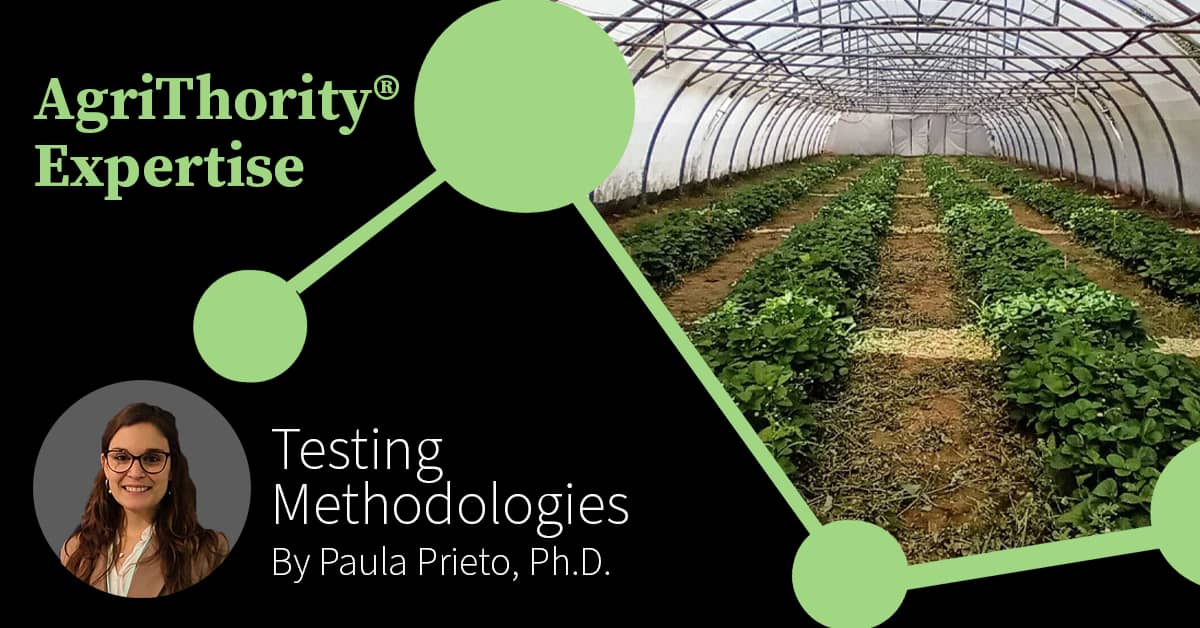
In agricultural product development, the choice between controlled condition testing and field trials is not merely a matter of preference but a strategic decision with far-reaching implications. These two testing methodologies offer unique advantages and challenges, necessitating a comprehensive understanding to make informed decisions and drive successful innovations in agriculture. When are controlled conditions better than field environments testing?
Controlled Condition Testing Is Fundamental
Controlled condition testing serves as a fundamental pillar in the initial stages of product development within the agricultural industry. By creating environments where variables such as temperature, humidity, light intensity, and soil conditions can be precisely controlled, researchers gain insight into the effects of specific treatments on plant growth, development and physiology. This meticulous control allows for the isolation of individual factors, which enables researchers to discern their impacts with higher accuracy.
Furthermore, controlled conditions provide an ideal setting for testing the efficacy of biostimulants, which normally trigger a complex response multifactorial. They also enable the assessment of efficacy to artificial inoculations, infestations, and evaluating the effects of various stressors such as salt or cold stress. These controlled environments offer a level of precision and repeatability that is often unattainable in field settings, which makes them indispensable for hypothesis testing and early-stage product development.
However, the effectiveness of controlled condition testing is contingent upon meticulous experimental design and execution. Factors such as the experimental design and proper assessments play pivotal roles in ensuring the reliability and reproducibility of results. Moreover, the maintenance and resource requirements associated with keeping controlled environments can be substantial, which necessitates vigilant monitoring and investment in infrastructure.
Field Trials Offer Real-World Conditions
In contrast, field trials offer a unique opportunity to evaluate product efficacy under real-world conditions and encompass the complexities of natural environments such as climatic variability, soil heterogeneity and interactions with native microbiota. Field trials provide invaluable insights into long-term effects, interactions with neighboring plants, abiotic and biotic stressors, and the practical implications of agronomic practices such as irrigation, fertilization and pest management strategies.
Furthermore, field trials allow researchers to assess the socio-economic impacts of new agricultural technologies. By studying factors such as yield variability, market acceptance and adoption rates, researchers can gain an understanding of the potential implications of their innovations beyond purely agronomic considerations.
Careful Field Trial Design and Execution Essential
However, conducting experiments in field environments introduces inherent variability and complexity, which necessitates careful trial design and execution. Factors such as plot layout, experimental design, sampling strategies, and data collection methodologies must be meticulously planned to ensure the reliability and validity of results. Additionally, the logistical challenges associated with conducting field trials, such as land access, weather unpredictability, and pest and disease management, can significantly affect the data generation.
Despite these challenges, the practical relevance of field trials cannot be overstated, particularly in understanding product efficacy within real-world contexts. Field trials offer a more realistic representation of plant growth dynamics and interactions, which provides researchers with invaluable insights into the performance of crops under diverse environmental conditions.
In terms of data analysis, different standards apply to controlled conditions and field trials. In controlled conditions, a higher minimum confidence level is typically required, in comparison to field conditions, in which a lower minimum confidence level is acceptable. This reflects the inherent variability and complexity associated with field environments, where a higher tolerance for uncertainty is often necessary.
Both Controlled Condition Testing and Field Trials Are Needed
Ultimately, the key to successful product development within the agricultural sector lies in integrating the strengths of both controlled condition testing and field trials. While controlled conditions offer precision ideal for hypothesis testing and early-stage development, field trials provide essential real-world validation, which is crucial for assessing product efficacy under diverse environmental conditions.
Strategically utilizing both methodologies throughout the development pipeline allows agricultural stakeholders to maximize the effectiveness and market readiness of their products. This symbiotic relationship between precision and realism is fundamental in driving innovation and sustainability within the agricultural sector to ensure that new technologies meet the complex challenges facing modern agriculture while minimizing risks and maximizing benefits for farmers, consumers and the environment.


